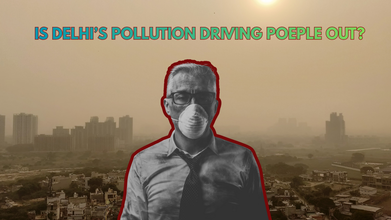- Health Conditions A-Z
- Health & Wellness
- Nutrition
- Fitness
- Health News
- Ayurveda
- Videos
- Medicine A-Z
- Parenting
Can You Use Ketamine To Treat Depression?

As per a new research that studied the trends on the use of ketamine, a hallucinogenic drug for recreational purposes noted a rise in the US between 2015 to 2022. The study conducted by Kevin H Yang, Wayne Kepner. Charles M Cleland and Joseph J Palamar titled Trends and characteristics in ketamine use among US adults with and without depression, 2015–2022 noted that recreational ketamine use has increased in the United States in the recent year and has outpaced its rise as a treatment for depression.
What is Ketamine?
It is a hallucinogenic drug, and is a controlled substance designed for use as an aesthetics. It also has now been touted for its potential as a therapy for depression. Published in the Journal of Affective Disorders using the data from the 2015-2022 National Survey on Drug Use and Health, the study drew its conclusion on the ketamine use among the US adults.
If ketamine rings bell for you, it is because it is the same drug, which, due to it being abused and overdosed, led to the death of Mathew Perry.
Is It Safe?
There are ways of giving people ketamine. One of the ways is through “infusing”, which means to use an IV drip. However, injections, nasal sprays and capsules are also methods used to give people ketamine.
Ruling Out Actor's Death By Ketamine Infusion Therapy: Since the dosage of ketamine used in the infusion treatment is small, it being the reason of actor Perry’s death was ruled out. The medical examiner also noted that Perry’s last ketamine infusion therapy session happened more than a week before his death, which means by the time he had died, it must have worn off.
What Did The Study Find?
Coming back to the study, it observed that in 2015, 0.11% of 214,500 survey respondents reported using ketamine, however by 2019, the percentage increased to 0.20, which, as an overall was an 81.8% increase. Between 2021 and 2022, its use as a recreational drug increased to 0.28%.
“This would translate to approximately 728,000 adults in the U.S. who used ketamine in the past year,” says Kevin Yang, a resident physician in the University of California at San Diego School of Medicine’s department of psychiatry and the study’s first author.
Although the analysis focused on its recreational use and referenced ketamine with its street name as Special K or Super K, some survey respondents may have accessed the same in medical settings too.
However, the recreational use still lags when compared to use of marijuana. In 2022, 23% of National Survey on Drug Use and Health respondents 18 and older said they had used cannabis in the past.
Concerns
The Substance Abuse and Mental Health Services Administration (SAMHSA) conducts an annual survey to collect nationally representative data on nonmedical drug use among U.S. adults. This survey gathers information about participants' drug use within the past year, collects demographic details, and identifies respondents who experienced a major depressive episode during the same timeframe.
As per the data, people between age 26 to 34, especially in college or higher educational institutions, and non-Hispanic White were likelier than other demographic to use ketamine. Those who reported the use of other drugs were also most-likely to use other drugs recreationally. The concern is also, if other drugs are used, it could also be ecstasy, MDMA, GHB, and opioid which had higher odds of ketamine use and could be concerning when abused.
The major cause of concern is using opioids with ketamine at the same time, which has a high risk of overdose and death.
Unique Symptoms Of Norovirus In 2025 And How Long Does The Infection Last?

Credits: Canva
Recently the news of Norovirus outbreak in an AIDA cruise that has infected more than 100 guests and crew on board made news. This is the 21st outbreak, as confirmed by the Centers for Disease Control and Prevention (CDC). This case has brought back memories from the Royal Caribbean Cruise outbreak, where 94 out of 1,874 and 4 crew members also were infected by Norovirus.
This virus is also known as the 'rib-cracking' winter virus, which sets it apart from rest of the winter viruses. People who have been sickened by this contagious virus are vomiting explosively, which may make the sufferers to experience a cracking in their ribs, which is where it gets its name 'rib-cracking' winter virus.
What Is Norovirus? What Makes It So Unique?
The virus typically spikes after the holidays, when families gather indoors. However, new data from the Centers for CDC shows this year’s surge has arrived weeks ahead of schedule, and experts say there’s no obvious explanation yet.
According to the CDC, 12.5 percent of norovirus tests came back positive during the week of November 22, nearly identical to the 13 percent positivity rate the week before. Compared to two weeks earlier, infections have jumped by about 25 percent. But the real number of cases is likely far higher, as most people with norovirus never get tested.
Between August 1 and November 13, health officials recorded 153 norovirus outbreaks, more than double last year’s 69 during the same period, and far above the 65 reported in 2023.
The CDC estimates the U.S. sees around 2,500 outbreaks every year. An outbreak is recorded when two or more people fall ill from a suspected or confirmed shared source.
On cruise ships, which are closely monitored by federal agencies, outbreaks have also been climbing. The AIDAdiva, a German vessel currently on a long global route, recently reported a spike in cases. In a statement to USA TODAY, AIDA Cruises said it has increased hygiene measures on board and that infections are already declining.
“Seasonal illness peaks between November and April, and the AIDAdiva report reflects what we’re seeing on land,” the cruise line said.
Why Norovirus Hits So Hard
Norovirus infects roughly 21 million Americans every year and sends about 2 million to hospitals or clinics. It spreads easily through contaminated food, surfaces, shared utensils, or direct contact with an infected person. Even a tiny amount of virus can trigger illness.
Symptoms usually appear within 12 to 48 hours and include nausea, vomiting, diarrhea, stomach cramps, and sometimes fever and chills. The biggest danger is dehydration, which can set in quickly. Severe fluid loss can lead to low blood pressure, reduced organ perfusion, electrolyte imbalances, and in extreme cases, seizures or fainting.
The virus contributes to about 900 deaths in the U.S. annually, mostly among older adults.
Doctors emphasize that hand sanitizers don’t reliably kill norovirus. Frequent handwashing with soap and water is the best protection.
The season’s lowest positivity rate was recorded in early August at 6.5 percent. But with holiday travel and gatherings underway, health officials warn infections are likely to rise.
What Are The Symptoms Of Norovirus And How Long Do They Last?
- Nausea
- Vomiting
- Stomach pain or cramps
- Watery or loose diarrhea
- Feeling ill
- Low-grade fever
- Muscle pain
The symptoms usually begin 12 to 48 hours after your first exposure to the virus and could last from 1 to 3 days. You can, however, continue to shed virus in your stool for several week after your recovery. The shedding could go up for months if you have another medical condition.
Connection Between Migration And Pollution: People Are Leaving City To Be Away From Delhi's Toxic Air

Credits: Canva
Delhi woke up again to a thick layer of smog, with Delhi's AQI hovering over 300 on the Air Quality Index on Thursday morning under "very poor" category. After a long nine-day wait, city's AQI had slipped under "poor" category on Tuesday, but it is again back on the "very poor" category, while on Wednesday, there were strong winds that dispersed the pollutants. Yet the condition of the air quality remains bad.
As a result of this many people are leaving the city, or have at least considered leaving the city.
"I Felt Breathless And Constantly Fatigued"
Nikita Singh, 31, who runs a remote PR boutique agency was living in Delhi on and off for two years because it was two years back when she struggled to breathe during Delhi winters. "The pollution levels were so extreme that I felt breathless and constantly fatigued. That was the first time I seriously questioned whether I could continue living here long-term," she says.
For the first two years, she kept "oscillating". "I would stay in Delhi for work during peak months, then leave when pollution became unbearable, especially from November to January. Every return felt heavier. I had my eyes burning, headaches, chest tightness and a general feeling of 'I cannot do this forever'."
She has now permanent moved away from Delhi to Jodhpur, in Rajasthan, where she works remotely. However, it has not been easy on her. "Emotionally, it was tough because Delhi had become familiar, and my life and work circle were mostly based there," she says. However, thanks to her fully remote work and that fact that she had decided to prioritize her health, she was able to make the move.
She says that Jodhpur offers the cleaner air which she "never felt in Delhi". Her decision to move also came with her family uprooting from Delhi. "My family and I shifted together. AQI was a major trigger. We realized we could not keep exposing ourselves to those levels of pollution year after year," she reveals.
Migration And Pollution: More Delhiites Are Considering To Move Out Of The City
She is not alone, Vikash Makkar, a freelance linguist specialist and a journalist, who had been living in Delhi from the last 12 years, moved back to his hometown in Jamshedpur. "Since October with an unplanned journey, I moved to my hometown and have been living there. It is quite relaxed here as compared to Delhi's ongoing pollution crisis that I had faced," he shares.
29-year-old Riya Baibhawi also uprooted from the city. She had been living in Delhi from last 5 years. She is currently living in Ludhiana, Punjab, and her decision to leave city is also affected by the pollution. Though, it was not easy for her. "It was very tough because it was very difficult to find career opportunities with competitive salaries outside Delhi-NCR. It also required a cut down of my social life, which adversely affected my mental health," she says. She shares that one of her friends, who had been living in Noida for the last 20 years had also moved out as pollution exacerbated her asthma.
Another family, who have been living in Delhi's Karol Bagh for more than two decades now are considering moving out of Delhi. "They are looking for properties outside Delhi where air is cleaner," shares their 26-year-old daughter who now lives in her marital home in Noida.
As per a survey by a consumer insights platform Smytten PulseAI, about 34.6% of the residents surveyed in Delhi NCR have considered to move out of the city due to worsening air. A 2023 study published in the International Journal of Environmental Research and Public Health shows that if the level of PM2.5 increases by 10µg/m3, migrants coming into the city will be reduced by 21.2%. While migration in the city has been ongoing, pollution does show some strains of people moving out of the city.
As per the Air Quality Life Index released by the Energy Policy Institute at the University of Chicago (EPIC), the fine particulate matter or PM2.5 in air will shorten an average Indian's life expectancy by 5.3 years, and in Delhi, it could shorten a person's life span by 11.9 years. However, the Union government has said in the parliament that there is "no conclusive national data to establish a direct correlation between deaths or diseases occurring exclusively due to air pollution". This statement comes at a time when doctors themselves noted a surge in cases due to pollution and have urged people to leave the cities.
Fact Check: Does Japan Have A Fat Law?

Credits: Canva
The internet is obsessing with the idea that Japan has a fat law, it fines people for being "fat". Talk about sensational headlines, mistranslations, and social media exaggerations. But what does Japan's so-called 'fat law' actually say? Does it really change anything?
Health and Me did a closer fact check on Japan's Fat Law, and here is what we found.
Japan's Metabo Law: What It Really Means?
In 2008, the Japanese Ministry of Health, Labour and Welfare introduced the Metabolic Syndrome Countermeasures Promotion Law, which was popularly nicknamed the 'Metabo Law'. the word 'metabo' comes from metabolic syndrome, a cluster of high-risk conditions that include elevated blood pressure, high blood sugar, abnormal cholesterol, and excess fat around the waist. If left untreated, this could increase the risk of heart attacks, stroke and diabetes.
The law's main focus is on identifying these risks as early as possible. As part of Japan's long-standing annual health check tradition, about 50 to 56 million adults aged 40 to 74 undergo this mandatory waist measurements every year. The waistline thresholds are:
- 85cm for men
- 90cm for women
While the numbers are not arbitrary, they match the International Diabetes Federation's guidelines used to screen metabolic risks.
Is It Illegal To Be Overweight In Japan?
The Times-Union fact check confirms: "Japanese citizens cannot be fined or imprisoned for being overweight". RosePlus Japan also reports that the term "fat tax is a mistranslation and that "it is not illegal to be fat in Japan".
The law does not:
- Fine individuals for their weight
- Send people to jail for being overweight
- Deport or deny visas based on size
- Ban obese people
How Does The Law Actually Work?
The law basically shifts the responsibility away from individuals to governments and employers.
Annual measurement: Employers and local authorities measure the waistlines of eligible adults.
If someone exceeds the limit:
- They are offered counseling, health guidance, and follow-ups.
- After three months, progress is reviewed.
- After six months, they may receive additional health education.
No individual penalties: There is no fine for not losing weight.
Employer penalties:
- If a company fails to reduce the percentage of employees at risk, it may face increased contributions to national healthcare funds.
- Companies like NEC previously estimated potential fines of up to $19 million for not meeting targets
This structure makes the Metabo Law more of a workplace wellness mandate than a personal weight regulation.
Lost In Translation
Much of the misunderstanding comes from how Japanese concepts were translated in English. With the word "law" being reported internationally, it implied a strict legal prohibition.
"Metabo" was incorrectly equated was being "fat", losing its medical meaning.
Was The Law Successful?
- Japan already had one of the lowest obesity rates in the world, around 3.5 percent in 2009, compared to over 30 percent in many Western countries.
- Life expectancy in Japan has remained among the highest globally.
- However, obesity rates among men (based on BMI 25+) reportedly continued rising, reaching 31.7 percent in 2022 according to The Japan Times, as cited in the HR Digest analysis
However, there have been things that changed since 2008. This includes companies offering nutrition workshops, physical activity support, health check programs for employees and their families. The annual health checks are now more structured. People flagged for metabolic syndrome were connected with counselling and monitoring, which can reduce long-term medical costs. The conversation has now also shifted towards body autonomy, public health and role of employers in personal wellness.
© 2024 Bennett, Coleman & Company Limited

